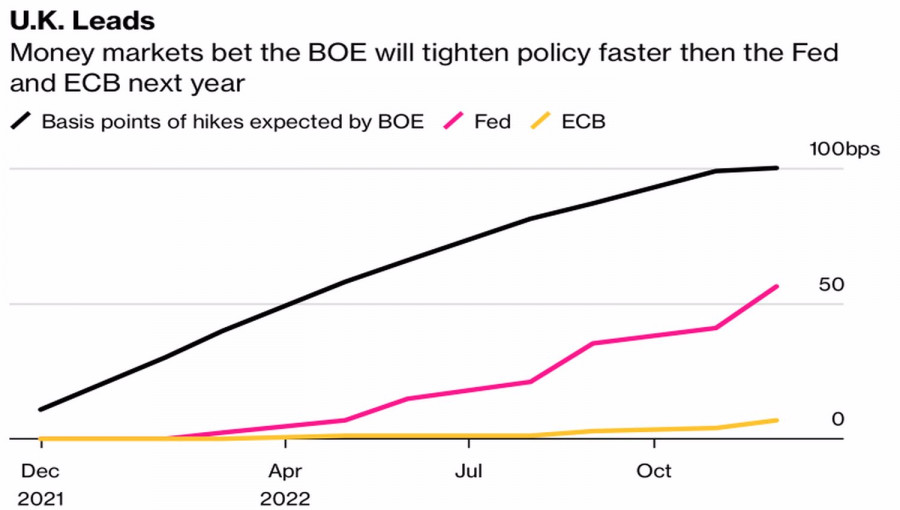It's time to bet against the rate hike. This is how hedge funds decide, looking at how the Bank of England begins to doubt the expediency of tightening monetary policy in December.
Prior to this, BoE Governor Andrew Bailey spoke about the need to act in order to curb raging inflation; that the labor market has met the conditions required for monetary restriction, but the closer the last MPC meeting in 2021, the more cautious Bailey is.
This circumstance forces investors to get rid of the pound.
Bailey said the U.K. faces bilateral risks in the form of the highest inflation since 2011 and a slow economic recovery. He called the latest statistics mixed, although data on employment, consumer prices and activity, and retail sales were eye-catching.
Nevertheless, the chief economist of the Bank of England, Hugh Pill, believes that the regulator has more arguments to leave the repo rate at 0.1% in December than to raise it to 0.25%, as the money markets would like to see. The latter still believe that BoE will outpace the Fed and the ECB in terms of the speed of monetary restriction.
Dynamics of expectations of rate changes by the world's leading central banks

By sowing the seeds of uncertainty, MPC members are knocking out almost the only trump card from the hands of sterling. The next wave of COVID-19 in Europe, a slower return of the British economy to the trend than previously anticipated, and the re-escalation of the Brexit topic are strong arguments in favor of selling GBPUSD.
Moreover, the FOMC members are beginning to talk about a faster tapering of the quantitative easing program than was previously assumed.
At its last meeting, the Committee decided to cut $120 billion QE by $15 billion per month in November and December, with subsequent adjustments to asset purchases based on incoming data. They were so strong that Federal Reserve Vice Chairman Richard Clarida said it would be appropriate to discuss early disposal of the program in December.
Fed Governor Christopher Waller thinks it should be history in the first quarter so that the central bank has the opportunity to raise rates in the second.
At the same time, London is not losing its optimism. The government plans to roll out three COVID jabs to most of its population, so as not to follow the example of other European countries and not impose restrictions. The country has already sold about 15 million boosters, which is equivalent to a quarter of the adult population.
U.K. Minister Michael Gove believes that it will not come to a trade war between the U.K. and the European Union. Moreover, the parties have already reported progress in the Northern Ireland negotiations.
In the week of November 26, investors' attention will be focused not only on the publication of the minutes of the FOMC meeting and data on U.S. inflation, but also on statistics on U.K. business activity.
Technically, only the growth of GBPUSD above 1.351 will allow us to speak of a correction due to the combination of the Three Indians and 1-2-3 patterns. Until this happens, we continue to use the sales strategies that brought us a lot of money earlier.
GBPUSD, Daily chart

